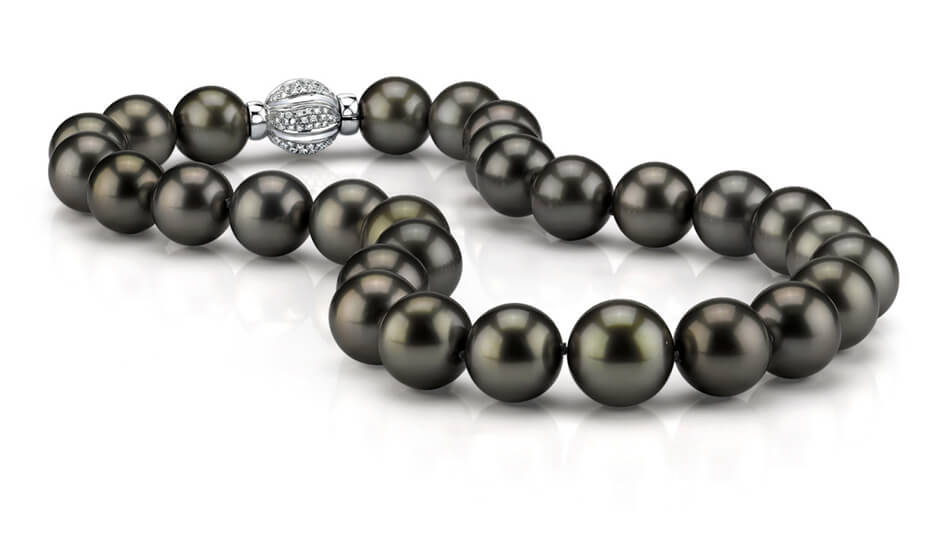Usually when we think of pearls, we imagine shiny white gems all strung one after the other on a necklace. Not only does pearl jewelry come in different designs – such as tin cup or scattered, in addition to the classic rope variety -, but it also comes in different colors. While freshwater pearls can come in creamy, pink or lavender varieties, Tahitian pearls are praised for their natural dark shades that helped them gain the title of “black pearls”. Even though there are other types of pearls that are sold in “black” varieties, such as Japanese Akoya pearls, Tahitian pearls are the only ones that come this way naturally. Regarding the unique color and how Tahitian pearls gain it, Live Science explains that “the interior shell, called the nacre, of most oysters is usually a glossy white or silver but the Tahitian black-lipped oyster features a thick band of black. If the pearl forms near that band, it will suck up that coloring”. If you want to learn more about these fascinating and rare pearls, you can read more about them below and even consider purchasing black pearl jewelry sets from the reputed online stores.

Rare & Highly Valuable
While many types of pearls are grown in several places around the world, natural black pearls are cultured only in the Polynesia islands of Tahiti (95%) and Cook Island (5%). Black pearls come from oysters, as opposed to freshwater pearls that are produced by mollusks, which is another factor for their rarity. Mollusks can produce even 50 pearls at a time, while an oyster is capable of producing just one pearl.
Not quite black, but just as breath-taking
Ok, let’s face it: Tahitian pearls are not exactly black, but they were named that way because of the very dark shades they come in. This means that “black pearls” are rather dark pearls, with deep tones of silver, purple, green or blue. No matter the base color, Tahitian pearls truly are a breath-taking beauty.
Bigger & Beautiful
In some cases, bigger is definitely better. When it comes to pearls, the fact that Tahitian pearls can grow up to an amazing 17 millimeters make them highly precious. The average freshwater or Akoya pearl typically grows up to just 10 millimeters, so you can understand the difference.
How about a rainbow pearl?
Yes, you heard us right, there are such thing as rainbow pearls. Rainbow or peacock pearls stand out among any other kinds of pearls owing to their colorful overtones (hence the “rainbow” label), such as yellow, purple or green. The Independent Educational Database on Diamonds, Pearls and Colored Stones & Minerals states that “peacock or rainbow black pearls are the most sought-after of black pearls and the most valuable”.
Natural vs Dyed
If you are dying for a pair of black pearl earrings, a necklace or a ring, you should know that not all varieties are natural. Freshwater or Japanese Akoya are dyed or treated to be black, while Tahitian pearls are the only natural ones on the market.

